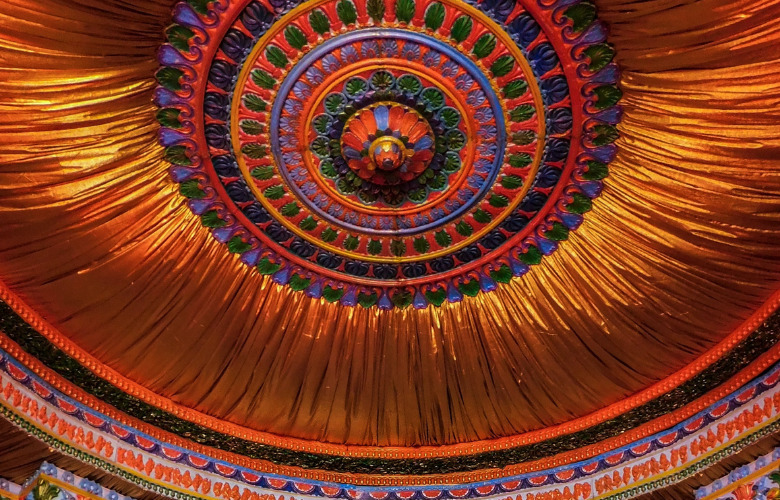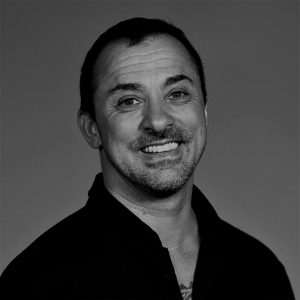
Dinesh Yadav is Assistant Professor of Lighting Design and Technical Director for Theatre and Dance at the University of Wisconsin-Green Bay, USA. He is a designer and performer at heart. Further positions he holds are head of the OISTAT Lighting Design Sub-Commission and project leader of the Designers on Design webinar. In this interview in two parts, Dinesh speaks about his career and shares his passion for his work with us. This is part 2 of 2.
In the first part of this interview, Dinesh told us how he went from being a scientist and college professor in science to risking it all by deciding on a second course of study at NSD, the Indian National School of Drama in New Delhi.
During the three-year residential program, he forged his way in theatre design, whilst also performing on stage whenever the chance arose.
He built on this experience by heading to London for half a year to study in the MFA program at LAMDA, the London Academy of Music & Dramatic Art.
After six months of intense experiences, Dinesh Yadav returned to India.
After returning to my country, I qualified for NET, the National Eligibility Test.
I stayed in New Delhi and began working as a freelancer. I had my own company and did designs for all kinds of theatre projects. Traditional, experimental, etc.
For the next four years, I traveled extensively all over India.
I worked with one of the very prominent curators of Indian arts, Rajeev Sethi.
And I began to connect to my background again, to folk music. Slowly, I began to incorporate music into my productions.
In 2010, the well-known Indian theatre director and playwright Roysten Abel invited me to join his theatre company. More specific, his already running show The Manganiyar Seduction.
His company is called Can & Abel Theatre. I began to work for them as a technical director.
It marked the next big milestone in my career. With Can & Abel, I worked in the USA, in Europe, New Zealand, Australia, Hong Kong, and in Singapore. At almost all the big festivals.
To experience the extreme diversity of the arts happening at big festivals is amazing. It exposed me to all kinds of professional, commercial theatre.
The Manganiyar Seduction was a show with traditional musicians from the Manganiyar community in Western Rajasthan. Since I came from that region as well, I built a strong bond with the artists.
Later, I directed two productions with them:
Jogiyar Mahabharat and Bairath Prasang.
Both were musical, narrative revival projects. Jogiyar Mahabharat revived the age-old form of Panduan Ke Kadde. I dove into these projects. And tried to incorporate different musical forms.
It was another big juncture in life for me, in terms of directing and doing theatre.
Meanwhile, I got a teaching appointment in India’s premiere institute, BITS Pilani, the Birla Institute of Technology and Science, Pilani.
There I worked primarily with engineers, but they were interested in theatre and the performing arts.
The Institute is extremely valued and important in India as well as abroad. It is also a residential school.
Working in this school inclined me to work with technology. It brought me into a research domain in which I worked on using technology for arts and entertainment.
In BITS, I met professors, social scientists, psychologists, scientists. All extremely knowledgeable professionals in their respective fields.
Then, in 2018, I got the appointment for the University of Wisconsin-Green Bay.
At the time, I still had my own company and directed shows for our productions.
But, essentially, in India there still is no commercial theatre. You invest what you have. But in the end, no matter what you do, earning bread and butter through theatre remains difficult.
When the University of Wisconsin-Green Bay contacted me, I thought of my family as well as of my future in the arts. My wife and I had a child. Accepting the new position gave me a chance to end up in a place that could financially support us but would also let me keep following my passion, to keep working in theatre.
So, I responded with a definite “yes.”
Since coming to Green Bay, I am in contact with many theatre people. It is easy to meet with other artists and scientists.
In 2007, I saw the PQ Prague Quadrennial design exhibition which is held in Prague every four years. It opened my mind even further to a multitude of possibilities in design. There is a myriad of different design work happening around the globe. Much of which we are not aware of – yet.
Then a friend introduced me to OISTAT, the International Organization of Scenographers, Theatre Architects, and Technicians. Eventually, I became a member.
OISTAT became a platform for me through which I could meet educators and artists around the globe. Through conferences and meetings, we got to know each other.
It’s a small community. You move around the world from conference to conference and you will keep meeting the same people.
OISTAT is a great place to share work with your colleagues.
In 2019, I was elected chair of the OISTAT Lighting Design Sub-Commission.
Then, in 2020, the Covid19 pandemic hit.
The idea was to invite designers, primarily with an OISTAT background, to share their work.
The webinar series ended up growing into something much larger in the end. It became a platform which was joined by artists and designers from around the world. The series became so popular, we ended up producing twenty-five sessions.
As of now, it looks as if we already have 300’000 viewers.
Doing this webinar connected me further with the larger theatre community around the globe.
I used to see more of the final product. Now I see more of the process.
In 2021, I was elected coordinator / chair of ASPIRE LORT, a leadership fellowship program which is designed to cultivate a new generation of artistic and administrative leaders for American theatre.
Now, I am swinging between OISTAT and KCACTF (the Kennedy Center American College Theatre Festival) for calibrations around artists and students.
This is pretty much my life and career story.
In between, I very much enjoyed working with the traditional arts in India. In my dream, I wanted to be in India and keep supporting the arts there. Stay and create work.
In the end, life has led me onto a more international, but just as fulfilling, path.
In my design practices, I am now more inclined towards sustainable design. Design which creates meaning. And design which can be reused, repurposed. I like to use biodegradable materials and minimalist design.
Often, I do theatre education workshops with children, or I direct plays with them.
It is profoundly interesting to work with kids and it connects to the question of what we want theatre to be.
Working with children is a two-way process. It tests your patience and communication skills. At the same time, it is also a laboratory in which to see what works and what doesn’t work. Often, I can translate these experiences directly into the professional teaching world.
Children are fantastic. They can make believe of anything.
More and more, I am thinking about what kind of theatre we want to create. Do we want to dazzle people with special effects in a 5’000-audience arena? Or do we want to work more towards something that is more individual and relates with the community?
This is where my Indian background comes in. In India, theatre is a medicine to share happiness.
I believe theatre is not entertainment. If it were only entertainment, it would have come to an end long ago. Yet, the art form survived throughout human history. As such, I believe that rather than entertainment, theatre is an essential element of human existence.
I want to practice theatre with this profound direction in mind. And I love seeing theatre as an amalgamation of culture and expression.
As sensible people, we need to always think of what we represent. What we bring on stage. Into the public realm, the Internet. What is the legacy we will leave behind and hand over to the next generations?
Dinesh Yadav on the OISTAT website
University of Wisconsin-Green Bay, Theatre & Dance Department
Contemporary Indian Theatre… And How It Developed Over Time
The Things You Should Know About Indian Folk Theatre


Liam Klenk was born in Central Europe and has since lived on four continents. Liam has always been engaged in creative pursuits, ranging from photography and graphic design, to writing short stories and poetry, to working in theatre and shows. In 2016, Liam published his first book and memoir, 'Paralian'.
Read Full Profile© 2021 TheatreArtLife. All rights reserved.

Thank you so much for reading, but you have now reached your free article limit for this month.
Our contributors are currently writing more articles for you to enjoy.
To keep reading, all you have to do is become a subscriber and then you can read unlimited articles anytime.
Your investment will help us continue to ignite connections across the globe in live entertainment and build this community for industry professionals.